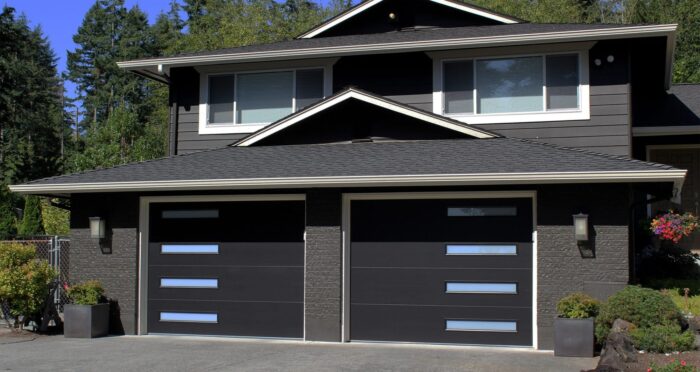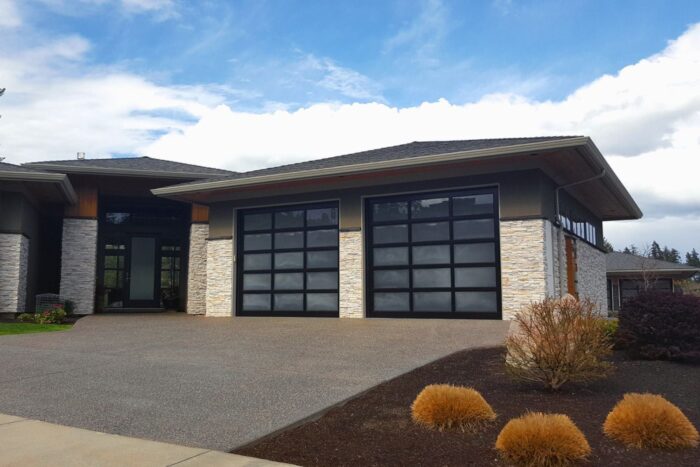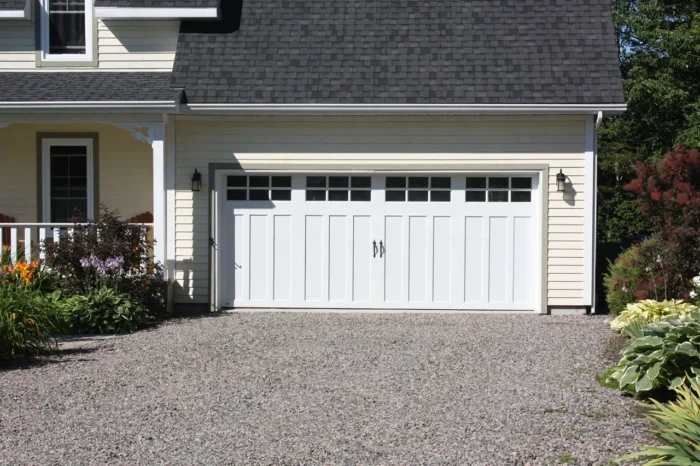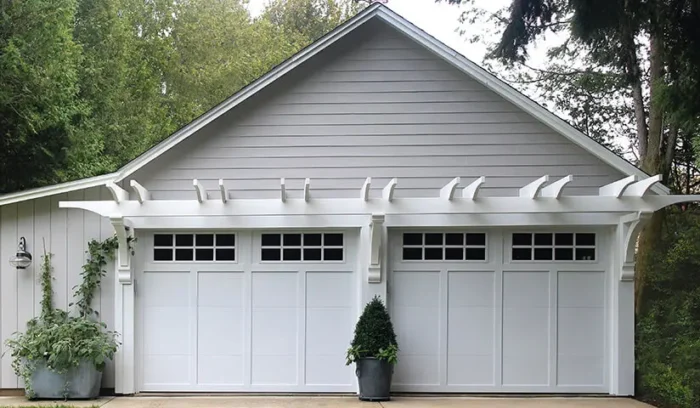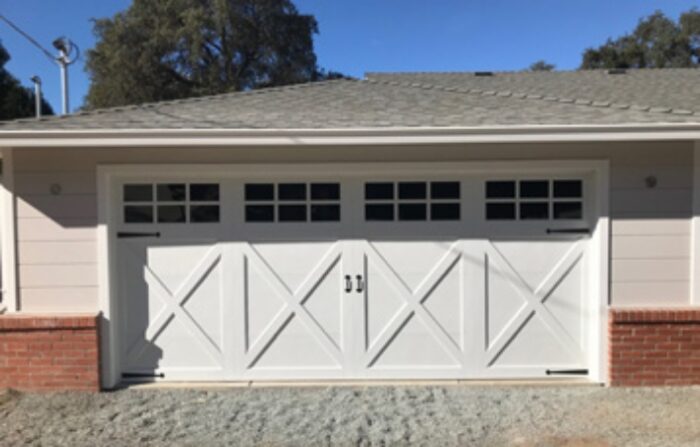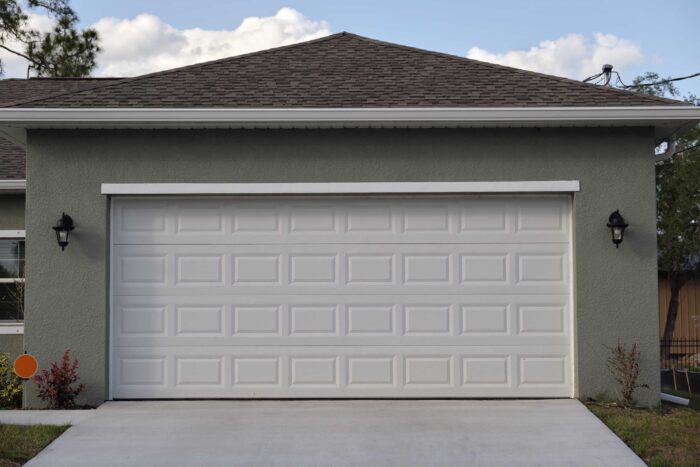As a homeowner, I’ve encountered my fair share of unexpected repairs and maintenance tasks. One day, it was my garage door that demanded attention. It’s an essential part of my home, providing security, convenience, and curb appeal. When it started acting up, I knew I needed to address the issue promptly.

By following Trophy Club Overhead & Garage Doors, I’ll share my personal journey and insights into the average cost of garage door repair services.
The Significance of a Functioning Garage Door
Before we delve into the costs, let’s discuss why a functioning garage door is so vital. For most homeowners, the garage door serves multiple purposes:
- Security: A garage door acts as a barrier between your home and the outside world. A malfunctioning door compromises the security of your property.
- Convenience: Your garage door provides easy access to your vehicles and serves as a primary entry point to your home. A smoothly operating door saves time and hassle.
- Curb Appeal: The garage door is a prominent feature of your home’s exterior. A well-maintained and aesthetically pleasing door enhances your property’s curb appeal.
- Protection: In many homes, the garage also serves as storage for valuable items. A functional garage door protects these possessions from the elements and theft.
Given these essential roles, addressing garage door issues promptly is crucial.
Understanding the Costs of Garage Door Repairs
The cost of garage door repair services can vary widely, depending on several factors. Here are some key considerations when estimating the expenses:
- Type of Repair: The nature of the repair plays a significant role in determining the cost. Minor issues like a misaligned sensor or a malfunctioning remote control will typically be less expensive to fix than major structural problems or spring replacements.
- Parts and Materials: The cost of replacement parts and materials, such as springs, cables, rollers, hinges, and sensors, will contribute to the overall expense. High-quality parts may come at a higher price but often offer better longevity.
- Labor: The labor cost associated with garage door repairs can vary based on the complexity of the job and the service provider’s rates. Expect to pay hourly labor fees in addition to parts costs.
- Emergency vs. Scheduled Repairs: Emergency repairs, especially outside of regular business hours, can incur higher costs due to service call fees and urgency. Scheduling repairs during regular hours may be more cost-effective.
- Warranty Coverage: If your garage door or its components are under warranty, some repair costs may be covered. It’s essential to check your warranty terms and conditions.
- Service Provider: The choice of a service provider can impact the cost. Established and reputable garage door companies may charge more for their services, but they often provide quality work and customer service.
- Location: The cost of garage door repairs can vary by location and market demand. Prices may be higher in urban areas or regions with a high cost of living.
Now that we have an understanding of the factors that influence garage door repair costs, let me share my experiences and insights.
My Garage Door Repair Journey
- Diagnosing the Issue: When my garage door began acting up, I started by diagnosing the problem as best as I could. I observed its behavior, listened for unusual sounds, and checked for obvious signs of damage.
- Consulting a Professional: While I attempted to identify the issue, I knew that a professional’s expertise was essential. I contacted a reputable local garage door repair company and scheduled an inspection.
- Inspection and Assessment: The technician arrived promptly and conducted a thorough inspection of my garage door system. They quickly identified the issue – a damaged spring that needed replacement.
- Quotation: The technician provided me with a detailed quotation for the repair, which included the cost of the replacement spring, labor, and any additional parts that might be needed.
- Cost Evaluation: I evaluated the cost of the repair and compared it to the potential consequences of not addressing the issue promptly. A malfunctioning garage door could lead to further damage or even safety risks.
- Proceeding with the Repair: After careful consideration, I approved the repair. The technician promptly replaced the damaged spring and conducted a safety inspection to ensure everything was functioning correctly.
- Final Costs: The total cost of the repair, including parts, labor, and a service fee, amounted to approximately $250. While it may seem like a significant expense, it was a worthwhile investment in the security and functionality of my garage door.
Common Garage Door Repairs and Their Costs
Now, let’s take a closer look at some common garage door repairs and their average costs:
- Spring Replacement: Replacing a single garage door spring can cost between $100 and $200. If both springs need replacement, the cost may double.
- Roller Replacement: Replacing a set of rollers typically ranges from $85 to $150, depending on the type and quality of the rollers.
- Cable Replacement: Cable replacement can cost between $100 and $200, including labor and materials.
- Sensor or Photo Eye Replacement: Replacing a malfunctioning sensor or photo eye usually costs between $50 and $100 per sensor.
- Opener Repair: Repairing a garage door opener can range from $100 to $400, depending on the issue and whether any replacement parts are needed.
- Track Alignment: Fixing misaligned tracks may cost around $125 to $150.
- Panel Replacement: Replacing a damaged garage door panel can range from $150 to $500, depending on the panel’s size, material, and design.
It’s essential to note that these are average costs, and the actual expenses can vary based on factors such as location, the service provider, and the specific requirements of your repair.
Tips for Managing Garage Door Repair Costs
To manage garage door repair costs effectively, consider the following tips:
- Regular Maintenance: Invest in regular garage door maintenance to catch and address issues early, reducing the likelihood of costly repairs.
- Compare Quotes: Obtain multiple quotes from reputable garage door repair companies to ensure competitive pricing.
- Understand Warranty Coverage: If your garage door or its components are under warranty, be sure to understand what is and isn’t covered to minimize out-of-pocket expenses.
- Emergency Funds: Set aside a budget for unexpected garage door repairs in your home maintenance budget.
- Proactive Repairs: Address minor issues promptly to prevent them from escalating into more expensive problems.
In conclusion, as per Trophy Club Overhead & Garage Doors, the average cost of garage door repair services can vary depending on several factors. While these expenses may seem burdensome, it’s important to consider the value of a well-functioning garage door in terms of security, convenience, and property value. Taking a proactive approach to maintenance and addressing issues promptly can help you save money in the long run and ensure the continued reliability of your garage door.
Trophy Club Overhead & Garage Doors
2412 Trophy Club Dr, Trophy Club, TX 76262, United States
817-646-5315





